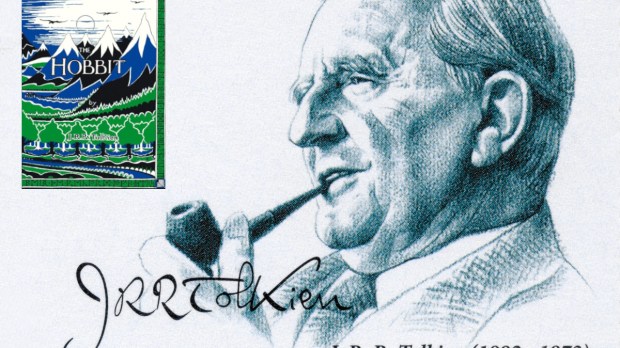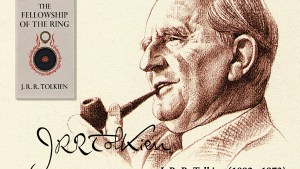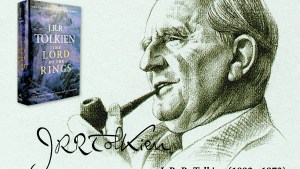It has been half a century since J.R.R. Tolkien walked among the people of Arda (his name for “our own green and solid Earth”). Yet even in the 21st century, Tolkien remains a figure of great cultural significance.
Unfortunately, many people know about Tolkien only from the films, streaming shows, and video games adapted from his books. Perhaps that’s simply because many readers avoid the fantasy genre. Others may be intimidated by the sheer volume of Tolkien’s writings and may not know where to begin. Even readers of The Hobbit and The Lord of the Rings often stop reading Tolkien after completing those classics. That is a pity, because they are missing out on many equally valuable treasures.
To commemorate the 50th anniversary of Tolkien’s death, we offer this reading guide, featuring some of our best articles on Tolkien’s six most essential books.
The reading order that we suggest is somewhat unconventional. It follows neither the original dates of publication nor Tolkien’s chronology for Middle Earth. Rather, we want to take readers on a journey into the mind and heart of Tolkien, leading up to his masterpiece, The Lord of the Rings.
Feel free to read these books in any order you’d like, of course. The important thing is to start reading and get started on your adventures!
1 THE HOBBIT
The respectable hobbit Bilbo Baggins joins an odd wizard and 13 dwarves to retake their mountain home from the dragon Smaug.
The Hobbit, or There and Back Again, is a novel Tolkien wrote for his children. It’s a great place to start if you are unfamiliar with Tolkien’s work. Adults will enjoy the adventures of Bilbo Baggins as much as kids, but as Tess Cevantos Barber explains, reading the book with a group of children can be an “interesting and memorable” experience.
Tess Cevantos Barber on THE HOBBIT.
2LEAF BY NIGGLE
The artist Niggle attempts to paint a tree, but is constantly being distracted by other matters.
“Leaf by Niggle” is crucial for understanding J.R.R. Tolkien’s own view of himself and his work. Philip Kosloski explains that this short story “surpasses even The Lord of the Rings in Catholic symbolism.” He also regards it as a unique and creative look at the reality of Purgatory.
Philip Kosloski on LEAF BY NIGGLE
3BEREN AND LÚTHIEN
A mortal man named Beren falls in love with Lúthien, a beautiful and immortal elf-maiden.
Tolkien was always clear that his wife Edith was his muse and his Lúthien. “The author explained in a letter how everything he wrote was founded on the romantic fairy story of Beren and Lúthien,” Philip Kosloski writes.
Philip Kosloski on BEREN AND LÚTHIEN
4THE LETTERS OF J.R.R. TOLKIEN
A fascinating selection of Tolkien’s personal and business letters prepared by his son, Christopher, and his biographer, Humphrey Carpenter.
J.R.R. Tolkien was a prolific letter writer — an impressive accomplishment when you consider that in addition to writing novels and poetry, he also taught philology at Oxford University. Anyone curious about Tolkien’s writing process and his dealings with publishers will find The Letters of J.R.R. Tolkien informative. There are also letters to his wife, Edith, and responses to some of Tolkien’s many fans who wrote to ask him questions.
Fr. Michael Rennier highlights one of the letters (#310) that Tolkien wrote in response to a little girl who had asked him “one, simple, incredibly-difficult-to-answer question.”
Fr. Michael Rennier on THE LETTERS OF J.R.R. TOLKIEN
5THE SILMARILLION
Tolkien’s epic recounting of the myths and stories that make up the background of Middle Earth.
The Silmarillion is rightly considered to be a challenging read, but it is also “the most profound work of J.R.R. Tolkien’s life,” in the view of Philip Kosloski. “It is a beautiful commentary on the book of Genesis, in which Tolkien uses mythological language to express fundamental truths about the universe.”
Philip Kosloski on THE SILMARILLION
6THE LORD OF THE RINGS
A band of reluctant heroes sets out to destroy the One Ring before it is seized by the evil Sauron, who craves ultimate power.
We end with Tolkien’s masterpiece. An encyclopedia’s worth of articles would not be enough to adequately prepare a reader to tackle The Lord of the Rings. Like any great work of literature, it must simply be experienced.
The author Joseph Pearce recently explained how reading The Lord of the Rings had “played no small part” in his conversion to Catholicism. Before setting off on your own adventures with Frodo Baggins and company, you might want to watch this wonderful lecture by Joseph Pearce, “Unlocking the Catholicism of The Lord of the Rings.”



